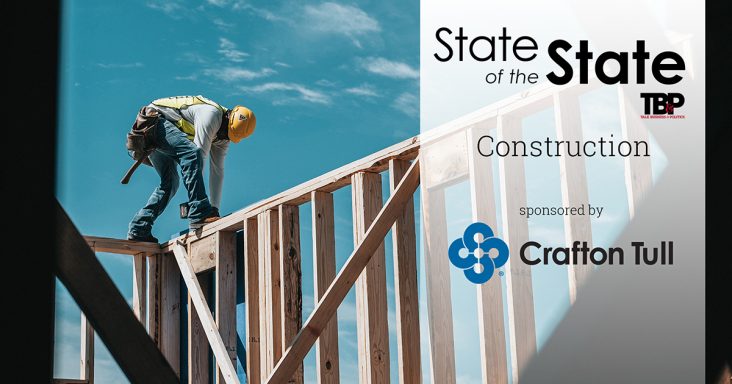State of the State 2024: Construction sector poised for growth
by January 31, 2024 5:09 pm 960 views

Editor’s note: The State of the State series provides reports twice a year on Arkansas’ key economic sectors. The series publishes stories to begin a year and stories in July/August to provide a broad mid-year update on the state’s economy. Link here for the State of the State page and previous stories.
Hyperinflation, rising interest rates, a weakened economy, supply chain issues and others plagued the construction sector in Arkansas as 2023 opened. Many of those issues started to ease as the year unfolded, according to Nabholz CEO Jake Nabholz.
Also, he told Talk Business & Politics that 2024 will be a year of growth within the construction industry. Nabholz said he hasn’t detected a definitive trend in the state in terms of what types of projects will do better in 2024. He expects that many public, industrial, retail, healthcare and others will all do well this year.
“I think we are all largely encouraged,” he said. “Construction inflation is down … it helps control project costs. It helps these projects stay more stable from a cost perspective.”
Construction material prices stabilized in 2023, according to the National Association of Home Builders. Material prices only rose by 1.3% on average last year after a 15% spike in 2022, and a 14% spike in 2021, the report noted. Material costs are projected to rise by 2% to 4% during 2024, according to a report from the real estate investment firm Jones Lang and LaSalle (JLL).
The Federal Reserve is projected to drop interest rates by 0.25% at least three times during the year and if it happens that will help drive costs down further, Nabholtz said.
“Higher interest rates put pressure on project costs,” he said.
One problem for construction firms in recent years is labor shortages. Arkansas has more than 62,000 construction workers, according to The Associated General Contractors of America (AGC). It’s a 12% increase from the 54,500 reported in 2022 and it means the state was the second highest in the country in terms of percentage of growth.
Nationally, the sector added 17,000 jobs alone in December. Despite those numbers, the lack of qualified construction labor will impact firms in 2024.
“The above-average wages that the construction industry pays have helped contractors add workers. More than two-thirds of firms in our survey say they plan to expand in 2024 but they expect it will be as hard or harder to do than it was in 2023,” AGC chief economist Ken Simonson said.
AGC officials have urged public officials to boost funding for construction education and training programs and to allow more people to legally enter the country to work in construction.
“Too few new workers are ever exposed to construction as a career opportunity,” said AGC CEO Stephen Sandherr said. “Boosting funding for construction education and training will expose more students to career opportunities in construction.”
Firms will have to find ways to adjust to the labor shortages.
“Falling productivity levels and shortage will force contractors to prioritize retention and the industry to accelerate investments in tech as well as alternative production strategies,” the JLL report noted.
One issue that looms over the industry and virtually all others is the development of Artificial Intelligence or AI. Nabholz said he will be curious to see how AI develops in the coming years and how it will help solve problems such as labor shortages. His company is contemplating using AI software to streamline construction schedules. If the software works as expected, it should add a layer of efficiency to project management, he said.
One issue that has plagued the industry since the COVID-19 pandemic has been supply chain disruptions. Many projects, public and private, residential and commercial have been stymied by supply chain problems. Sometimes lumber was in short supply. Other times projects were held up by smaller items such as doors or fixtures being unavailable.
Those problems are still real but it’s beginning to ease, Nabholz said. Suppliers have developed better methods for delivering supplies, and builders are more strategic about ordering materials needed to complete jobs, he said.
There are countervailing perceptions that construction projects are either pushed at a greater clip or that the industry slows down during a presidential election year. Nabholz said he hasn’t any discernible trends, but thinks its possible private projects may slow, but public projects remain on track during an election year.
An AGC survey of Arkansas builders found that the top concern in 2024 for 78% of respondents was interest rates, followed by rising labor costs (70%) and an economic slow down/recession (63%). Those surveyed think that values for certain projects such as transportation (42%), federal (41%), lodging (31%), and warehouse (29%) will increase in cost during 2024. Other projects such as retail (38%), data centers (18%) and higher education (14%) are predicted to decrease in value by builders surveyed.
What’s one way the construction industry could be improved?
“Man, it’s a great business. We just need to get more young people involved,” Nabholz said.
